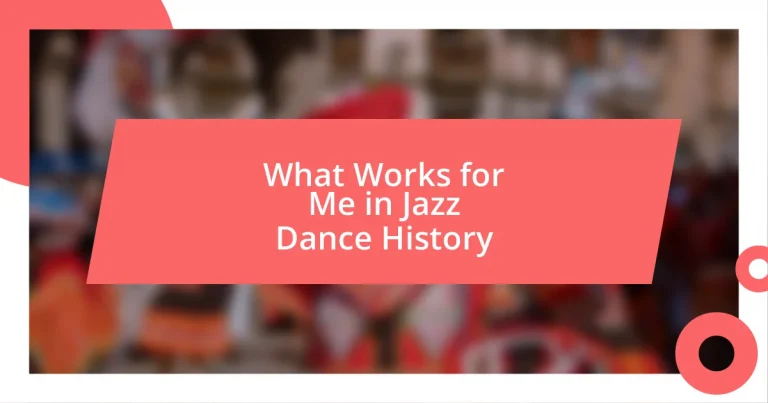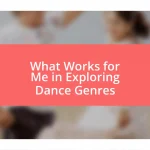Key takeaways:
- Jazz dance originated from African American traditions, blending various musical influences like blues, ragtime, and swing, reflecting cultural shifts over time.
- Key styles include Classic Jazz (high-energy and theatrical), Lyrical Jazz (emphasizing emotional expression), and Contemporary Jazz (integrating modern dance elements).
- Influential figures such as Bob Fosse, Katherine Dunham, and Alvin Ailey transformed jazz dance with their unique styles and storytelling techniques, highlighting the connection between dance and cultural identity.
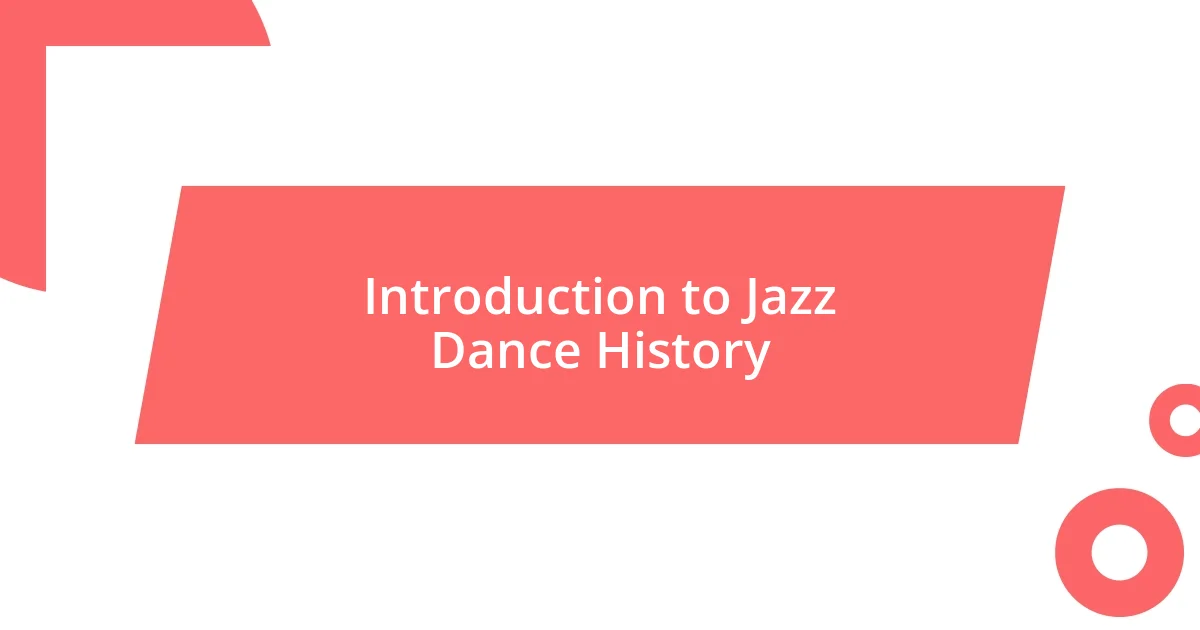
Introduction to Jazz Dance History
Jazz dance has a rich and dynamic history that reflects the cultural shifts of its time. Rooted in African American traditions, it evolved from the vibrant rhythms of the early 20th century, incorporating influences from blues, ragtime, and later, swing. When I first stepped into a jazz dance class, the instructor emphasized how each movement is steeped in stories—can you imagine dancing out your heritage?
As the years progressed, jazz dance morphed into various styles, from the energetic flares of the 1920s to the smooth interpretations of the 1970s. I remember watching old films featuring legendary dancers like Bob Fosse and feeling an electric connection to their artistry. How many of us have felt that pull to express ourselves through dance, mirroring the diverse narratives of our society?
Today, jazz dance continues to thrive, blending classical techniques with contemporary forms, yet the essence remains the same: a celebration of rhythm and a platform for self-expression. Reflecting on my journey, I often wonder how the fusion of cultural elements in jazz dance parallels our own experiences in a world that is always evolving.
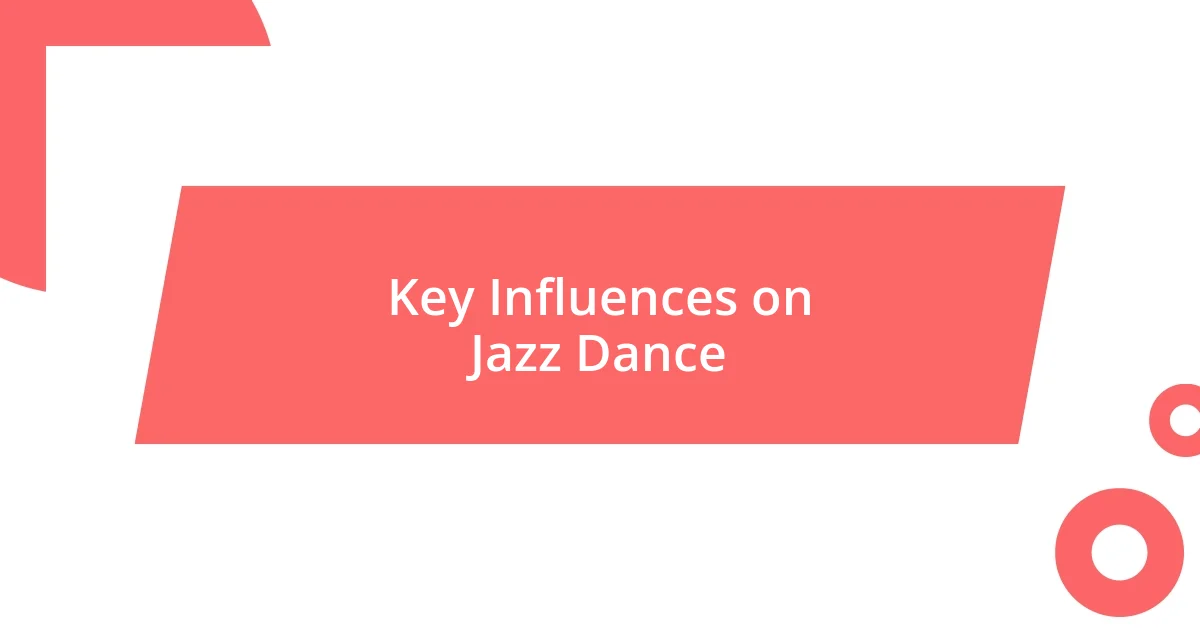
Key Influences on Jazz Dance
Jazz dance is a fascinating tapestry woven from various cultural threads, each adding a unique hue to its evolution. One of the key influences came from the African American communities that birthed jazz rhythms, shaping the very essence of the dance itself. I still recall the first time a mentor shared the significance of African dance movements, which resonated deeply with my own journey. Understanding those roots helped me appreciate the powerful narratives that each step and gesture convey.
Key influences on jazz dance include:
- African Dance Traditions: Embodied rhythms and movements that emphasize the connection to music and community.
- Blues and Ragtime: These music styles infused a sense of improvisation and emotional depth in jazz choreography.
- Vaudeville and Broadway: The theatrical elements of these venues brought jazz dance into mainstream culture, popularizing its energetic style.
- Swing Era: This key period in the 1930s and 1940s embraced upbeat, joyous styles that are still visible in today’s jazz dance.
- Influential Choreographers: Figures like Bob Fosse and Martha Graham, who melded jazz with contemporary techniques, left lasting marks on the dance landscape.
Each influence I explore reminds me not just of dance, but of the broader narratives at play—stories of resilience, joy, and connectivity that resonate in us all.
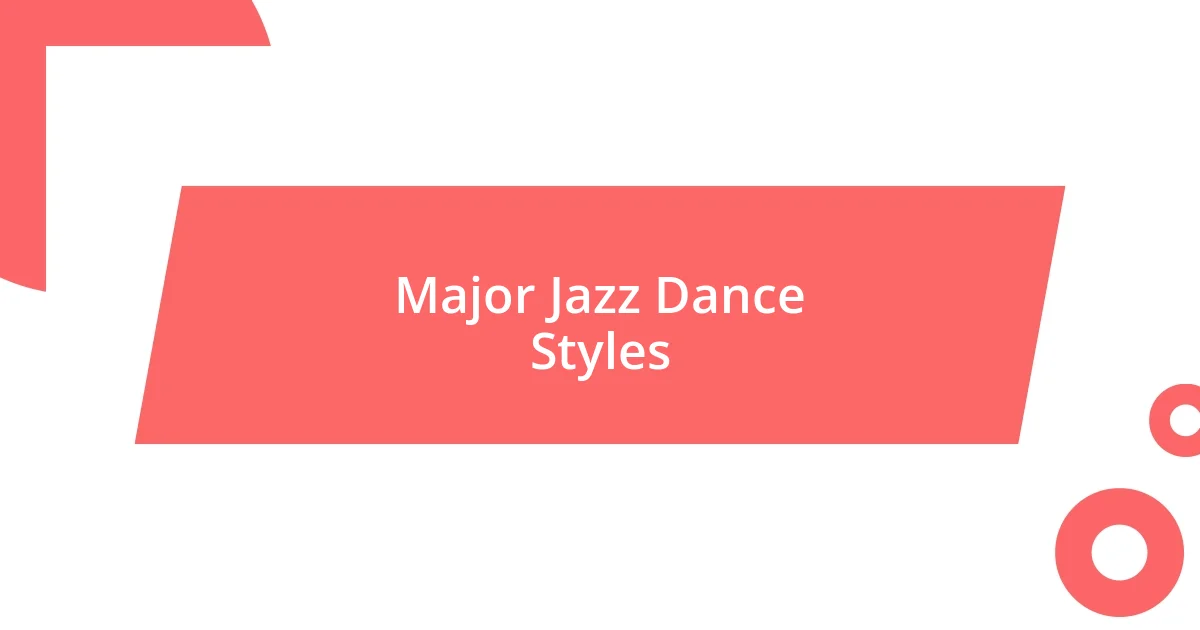
Major Jazz Dance Styles
Jazz dance encompasses various styles, each with its own unique flair and historical significance. One major style is “Classic Jazz,” characterized by its high energy and theatricality, where the sharp, quick movements often evoke a sense of exuberance. When I first tried my hand at classic jazz, I found that the choreography mirrored the vibrant music, making every step feel like an electrifying celebration.
Another important style is “Lyrical Jazz,” which emphasizes emotional expression and fluidity. This style blends jazz technique with ballet, allowing for graceful movements that tell a story. I remember performing a lyrical piece where each leap felt like a dialogue with the music—much like the way a heartfelt conversation flows between friends. This connection to the narrative made me appreciate how deeply jazz dance can communicate emotions.
Then there’s “Contemporary Jazz,” an evolution that incorporates elements from modern dance and hip-hop. It’s more grounded and often breaks away from traditional jazz norms. I once attended a contemporary jazz class where the instructor encouraged us to improvise; I was amazed at how liberating it felt to explore movement in a way that was uniquely mine. Each style invites exploration, urging dancers to find their unique expression within this exciting art form.
| Jazz Dance Style | Description |
|---|---|
| Classic Jazz | High-energy and theatrical movements blending quick footwork with vibrant music. |
| Lyrical Jazz | Fluid choreography that combines jazz and ballet, focusing on emotional expression. |
| Contemporary Jazz | A fusion of jazz with modern dance and hip-hop, emphasizing improvisation and personal expression. |
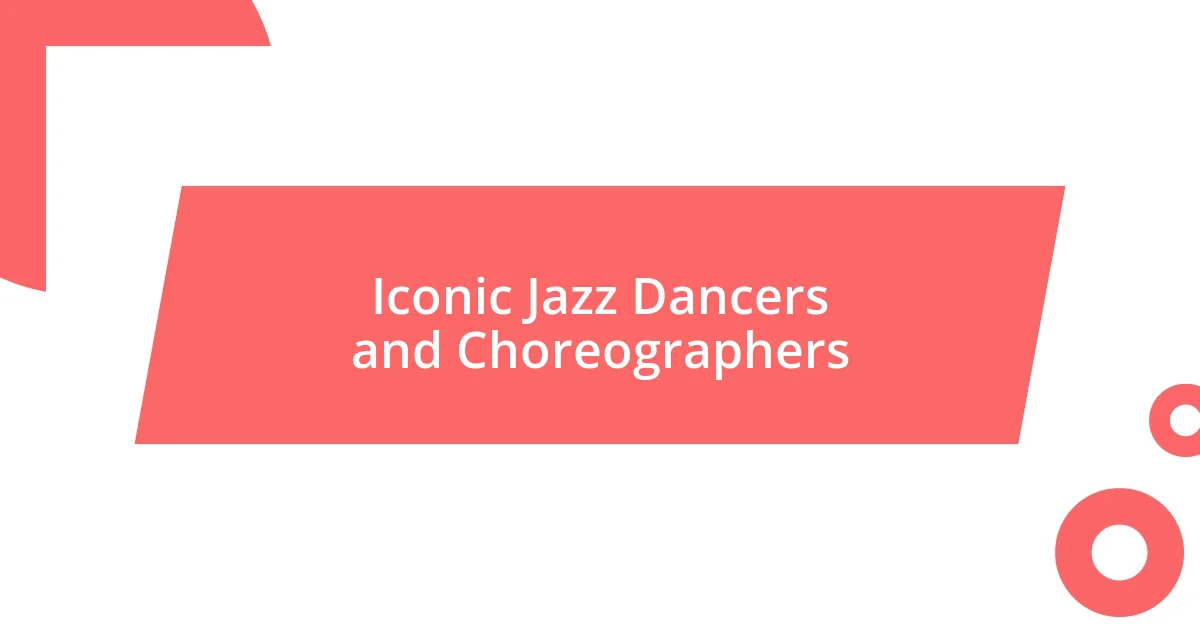
Iconic Jazz Dancers and Choreographers
One of the most iconic figures in jazz dance history is Bob Fosse. His unique style, characterized by angular movements and a strong sense of theatricality, reshaped the landscape of dance. I vividly remember watching a performance of “Chicago” and being struck by how his choreography made even the simplest movements feel provocative and electric. Fosse’s ability to merge emotion with technique taught me that every dance tells a story—a lesson I’ve carried into my own practice.
Another remarkable figure is Katherine Dunham, who not only paved the way for jazz dance but also emphasized the importance of African dance traditions. Her innovative choreography, which blended jazz with Caribbean and African influences, resonated deeply with me during my initial dance classes. I found myself fascinated by how her performances connected cultural roots to modern expressions. Each time I embody her movements, it feels like I’m honoring a legacy that bridges multiple worlds, making my own dance journey feel richer.
Then there’s Alvin Ailey, whose work celebrated the African American experience. I remember the first time I watched “Revelations”—the emotion and power in the dancers’ movements left me in awe. The way Ailey infused his choreography with spirituality and storytelling inspired me to explore my cultural identity through dance. Why do I dance? It’s not just about the steps; it’s about connecting to something bigger, and iconic figures like Ailey remind me of that profound journey.
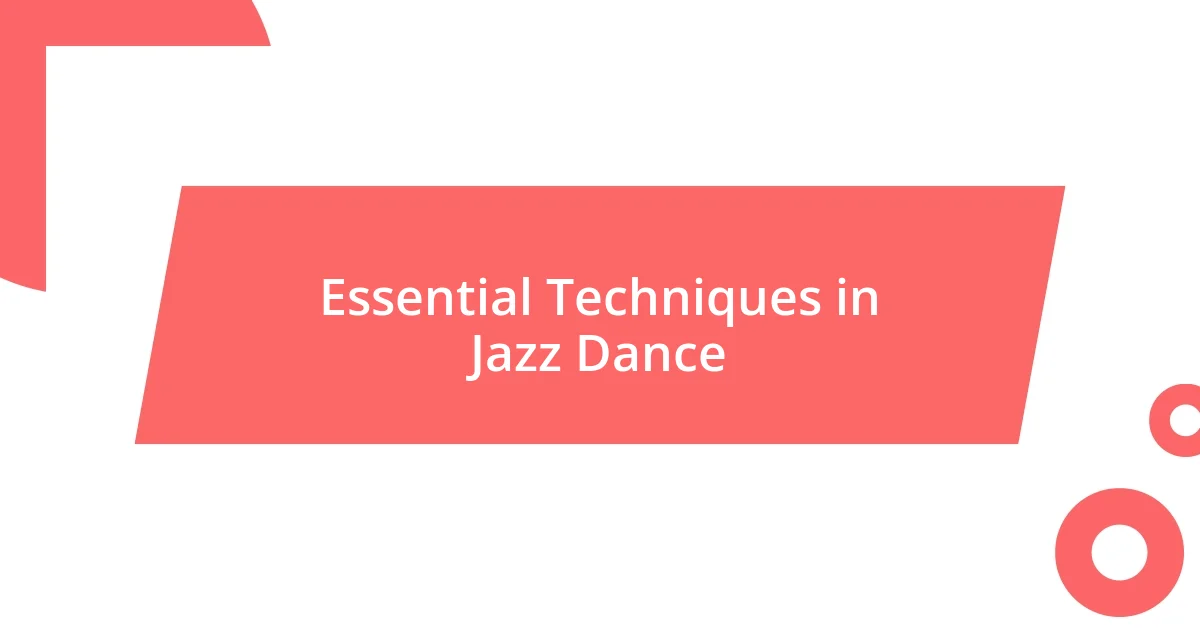
Essential Techniques in Jazz Dance
Jazz dance is built on a foundation of essential techniques that provide structure and depth to its vibrant styles. One of the core techniques is isolation, where dancers learn to move specific body parts independently. This technique has been transformative for me, especially during my first classes when I struggled with coordination. I still remember working on isolating my shoulders; each subtle movement felt like unlocking a new layer of rhythm that brought me closer to the music.
Another vital technique is the jazz walk, which combines elegance with a rhythmic groove. I recall when I first learned this walk; I had a hard time channeling confidence while keeping the flow. Over time, though, it became second nature, reminding me that embodying the attitude of jazz is just as crucial as mastering the steps. It’s amazing how this simple motion can instantly uplift one’s spirit and presence.
The final technique worth highlighting is the “kick-ball-change,” a foundational step that fuels so many jazz combinations. I often find myself using it in various routines, and it never fails to evoke joy. The way it combines a kick with weight shifts feels liberating, almost like I’m dancing into new possibilities. How can such a small movement hold so much energy? I believe it’s a testament to jazz dance that even the simplest techniques can lead us to expansive creativity and expression.












